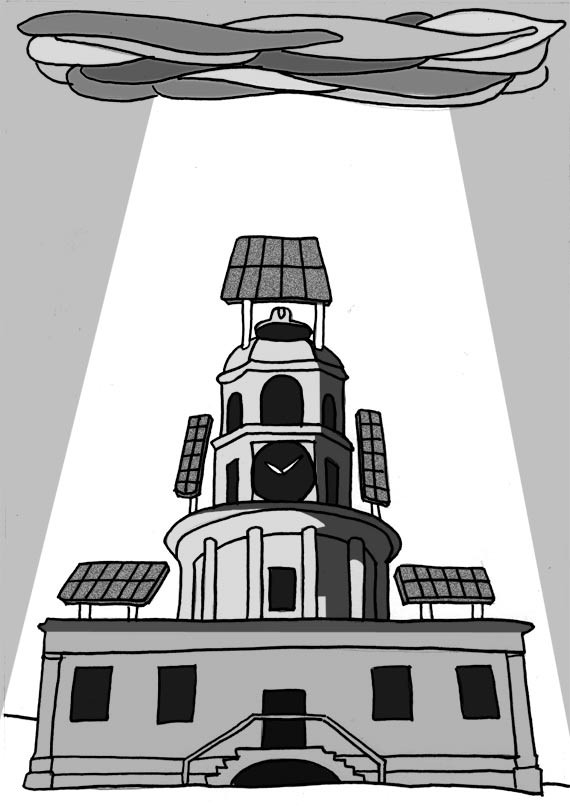Despite government initiatives for green home-energy use, most consumers are clueless about how to get their homes off oil. The visionary solar city program, which will equip 1,000 HRM homes with solar-heated water, is just a start. As a recent press release states, "the Community Solar Pilot Project is designed to help residents take advantage of the municipality's significant solar energy potential without having to become an expert in the technology or navigate the technical and financing options."
Demand for the program has far outstripped supply. The list of participating homeowners has been full for months.
The problem is, solar isn't necessarily the best way to cut down our greenhouse gas emissions. It's true, if surprising, that Halifax is well-situated for solar energy. But we also have old housing stock with poorly sealed buildings. Many are not insulated, or were once insulated with seaweed that fell down before the Mont-Blanc and the Imo made fireworks in 1917.
Generally speaking, sealing a house's envelope---the physical separation of the outside from the inside---is the best way to reduce greenhouse gases. "Draft proofing gives the best internal rate of return," Hal Richman says. He is COO of Bfreehomes, a local business that helps homeowners save significant energy. "You have to look at the house as a system."
Harnessing the power of the sun to heat our water is brilliant, but if your house is leaking hot air while your oil furnace or coal-fired electric rads are running overtime, you're dousing an inferno with a spray bottle. But every house is different. Few of us have the time or knowledge to navigate the options for reducing our homes' dependence on carbon, let alone the potential tax breaks and cost savings.
"We're lucky to have such visionary, practical people working on environment for the city," Richman says. "But it's tricky figuring out how to bundle energy efficiency and it's not something HRM can easily do."
Bfreehomes is developing online interactive software to help homeowners through the process. The user would enter qualitative and numerical data about the house (size, age, fuel consumption and source, location) and the owner (cash flow, motivation for reducing energy use).
The output is an "energy retrofit road map," essentially step-by-step instructions prioritised by the owner's values. The owner who values greenhouse gas emissions reductions above all might have a different plan than the owner who mostly wants to save money.
Richman acknowledges that the cost of his services is a barrier and is working to create a national co-op, called REBlock, that connects neighbourhoods with builders, renovators, landlords and developers, focused on accessing affordable retrofits for everyone. It sounds absurdly ambitious, but Richman is looking to American success stories like WeatherizeDC as models.
WeatherizeDC has organized 14 different Washington neighbourhoods to take an active role in securing their energy supply through home energy improvements. It's not only good for air quality, it's community development, bringing together faith groups, schools and NGOs with home improvement businesses that are vetted for quality and integrity. Much of the labour is done by people in the neighbourhoods, who are trained in skills that help them escape poverty.
It's a model that Richman has used on a smaller scale in Shelburne County. Bfreehomes modelled 10 typical houses of different age and size, assessed their specific needs, and connected owners with the appropriate tradespeople. The deep retrofits cost between $8,887 and $14,880, after tax rebates, and created annual savings of about $1,500 per house.
REBlock is the next step, making such changes affordable to people without thousands of dollars, including renters. "We're talking to investment property owners," Richman says. "We would estimate how much they could save each year and they pay us a small portion of that as our fee."
HRM would do well to take Bfreehomes' REBlock concept as inspiration. In the face of abundant but disjointed, confusing information about how to minimize our home fossil fuel use, "People go with what's convenient and easy," Richman says, "or go to [renewable energy] product vendors who have trouble being objective."
A thousand homes with solar hot water will help Halifax reduce its greenhouse gas emissions. But if the city wants to be green it needs to help every resident, regardless of income, to access the Hal Richmans of the world.












